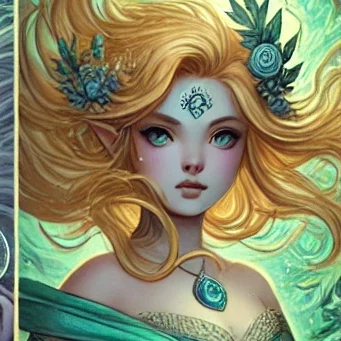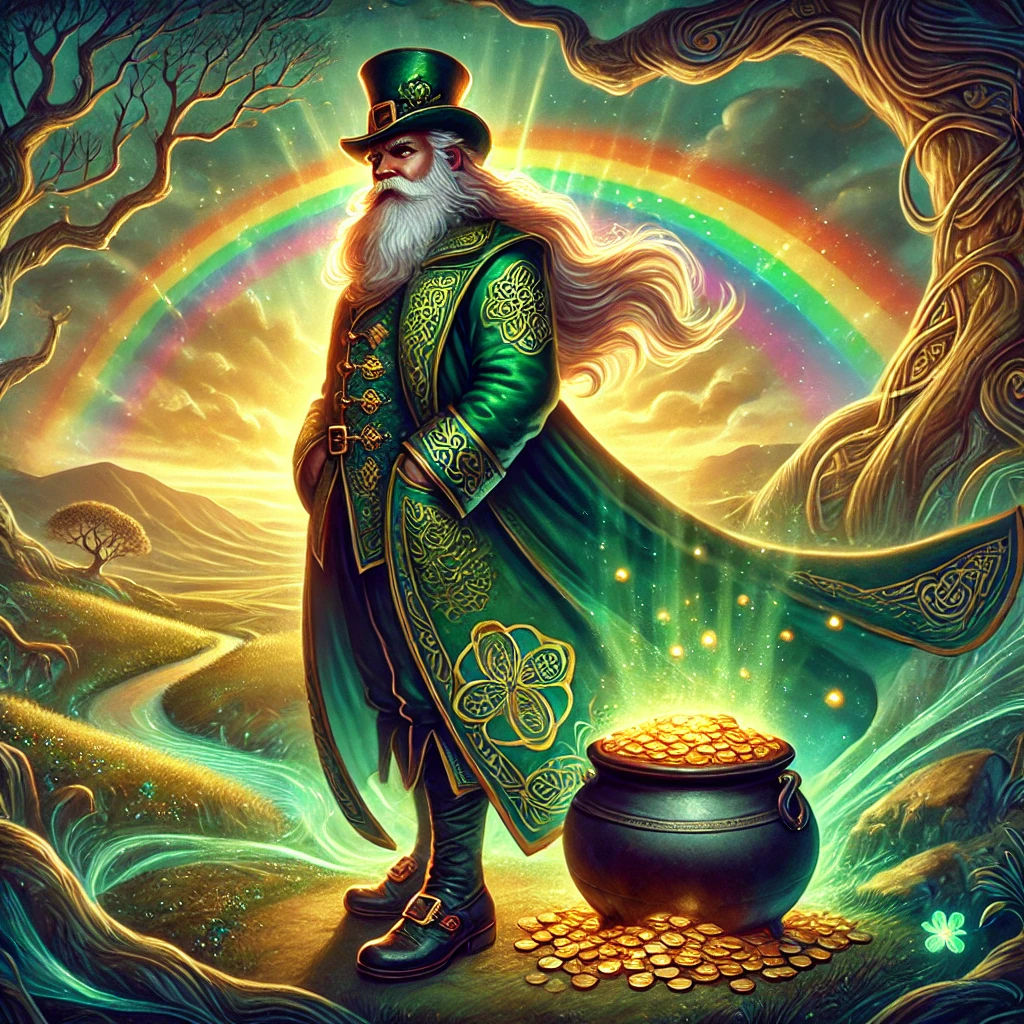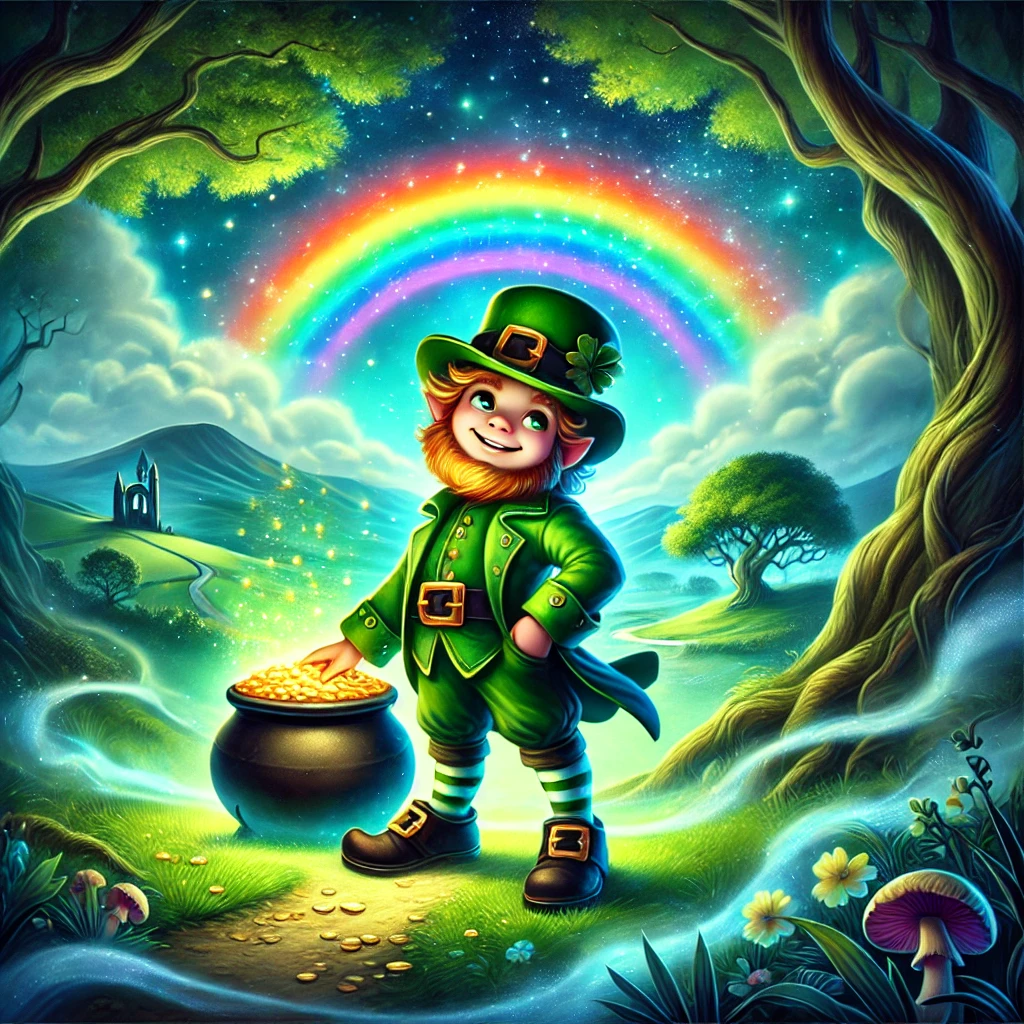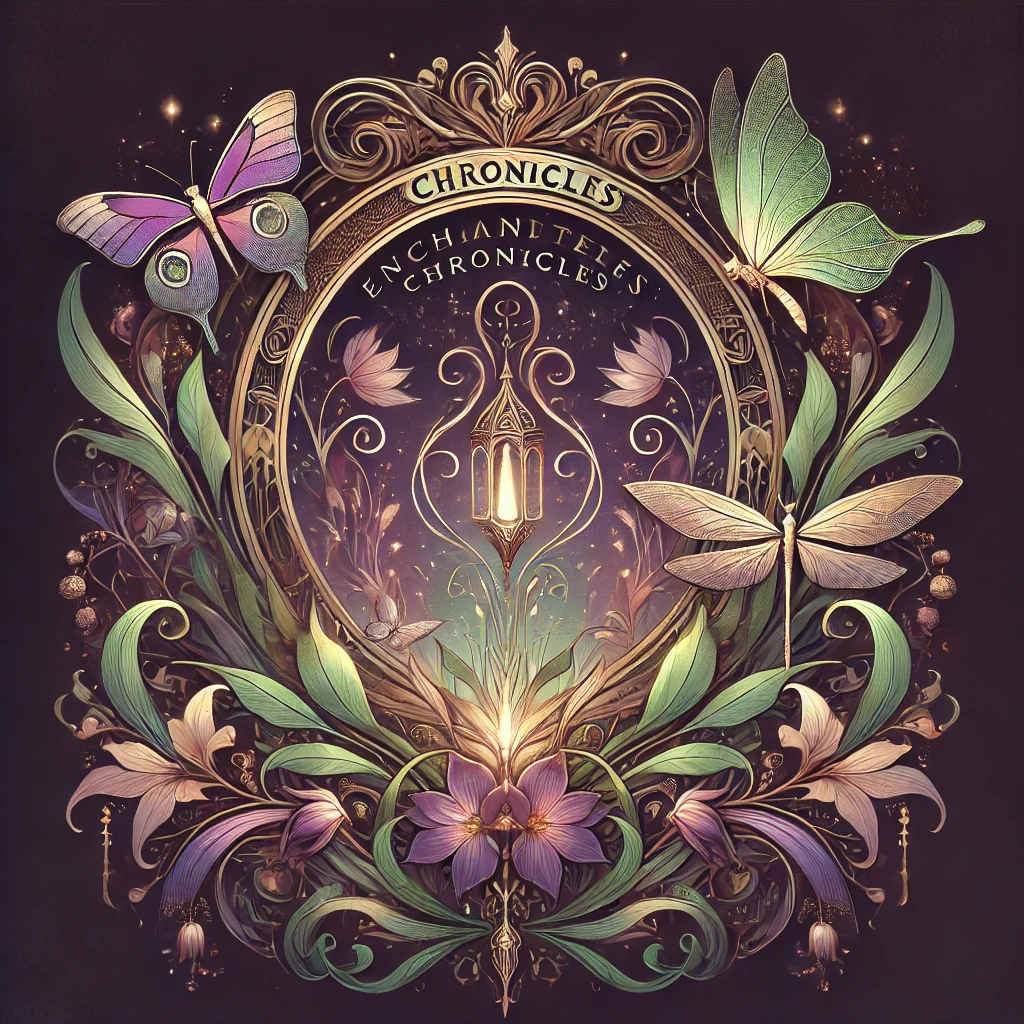The Leprechaun and His Pot of Gold: An Enchanting Journey Through Irish Folklore
In the lush, green hills of Ireland, a tiny figure clad in a green coat and buckled shoes is said to dart between the clovers, guarding his most prized possession — a pot of gold hidden at the end of a rainbow. This is the leprechaun, a character deeply rooted in Irish folklore, whose story has captivated both children and adults for centuries. But who exactly is the leprechaun, and how did his legend grow so far beyond the shores of Ireland?

By : Nissa Moonstar

The Leprechaun: an iconic figure
Origins of the Leprechaun
The leprechaun‘s roots trace back to ancient Celtic mythology. The name “leprechaun” is believed to come from the Old Irish word luchorpán, meaning “small body.” These mythical beings are thought to be part of the Aos Sí — supernatural folk who live in the Otherworld, a mystical realm intertwined with the human world.
Unlike fairies, who could be either benevolent or malevolent, leprechauns were typically solitary creatures. They were considered shoemakers for the fairy folk, hammering away at tiny shoes and amassing gold coins as payment for their work. According to legend, each leprechaun kept his treasure hidden in a pot at the end of a rainbow — an elusive spot that no human could ever quite reach.
Historical Context and Cultural Significance
The leprechaun’s tale evolved over time, with early references found in medieval Irish literature, such as the 8th-century tale Echtra Fergus mac Léti (“The Adventure of Fergus son of Léti”). In this story, Fergus, a king of Ulster, captures three leprechauns but releases them in exchange for wishes — a motif that would later become central to modern depictions.
The leprechaun also symbolizes the historical struggle of the Irish people. Some scholars suggest that leprechauns reflect the cunning and resourcefulness of those forced to survive under difficult circumstances, using trickery and wit to protect what little they had. As Irish immigrants spread across the world, especially during the Great Famine in the 19th century, they brought their folklore with them, helping to popularize the leprechaun internationally.
The Leprechaun in Popular Culture
Today, the leprechaun has become an iconic figure, especially associated with St. Patrick’s Day celebrations. With his green suit, ginger beard, and mischievous smile, he appears in parades, decorations, and even on cereal boxes (think of the famous Lucky Charms mascot!).
In the United States, the leprechaun has been adopted as a symbol of good luck and magic, often depicted as a playful trickster who grants three wishes to those clever enough to catch him. However, in traditional Irish folklore, leprechauns were far less friendly — they were tricksters, yes, but their cleverness was a defense mechanism against humans trying to steal their gold.
Moral Messages Hidden in the Legend
Beneath the whimsical surface, the story of the leprechaun carries important moral lessons. It teaches children that greed rarely leads to happiness. In most versions of the tale, those who catch a leprechaun and demand his gold are often outsmarted, learning that wealth gained through trickery or shortcuts doesn’t last.
Another lesson is about the value of hard work. The leprechaun earns his gold through honest labor as a shoemaker, a subtle reminder that persistence and effort are more reliable paths to success than chasing after rainbows.
Keeping the Magic Alive
Despite his mischievous reputation, the leprechaun remains a beloved character in Irish and global culture. In Ireland, certain towns like Carlingford even hold “Leprechaun Hunts” — playful events for children and tourists — celebrating the magical creatures while keeping their stories alive. Schools and libraries often host storytelling sessions, ensuring the next generation continues to embrace their cultural heritage.
For children, the legend of the leprechaun inspires wonder and imagination. It encourages them to dream of magical lands and hidden treasures, while subtly teaching them about honesty, hard work, and the importance of preserving folklore.
So next time you spot a rainbow arching across the sky, take a moment to wonder: Is there a clever little leprechaun at its end, keeping watch over his pot of gold?
You may not find the treasure, but you’ll certainly discover the magic of a story that has charmed the world for centuries.
And if you want to find out more about the Leprechauns, there is a Museum that is dedicated to them in beautiful Ireland.

Join our community of readers Subscribe To our newsletter!

Enchanted Chronicles: Ignite the Myths Within
Step into a world where ancient myths are no longer confined to books—they are part of your journey.
Sign up for free!
We won’t send you spam.
Unsubscribe at any time.